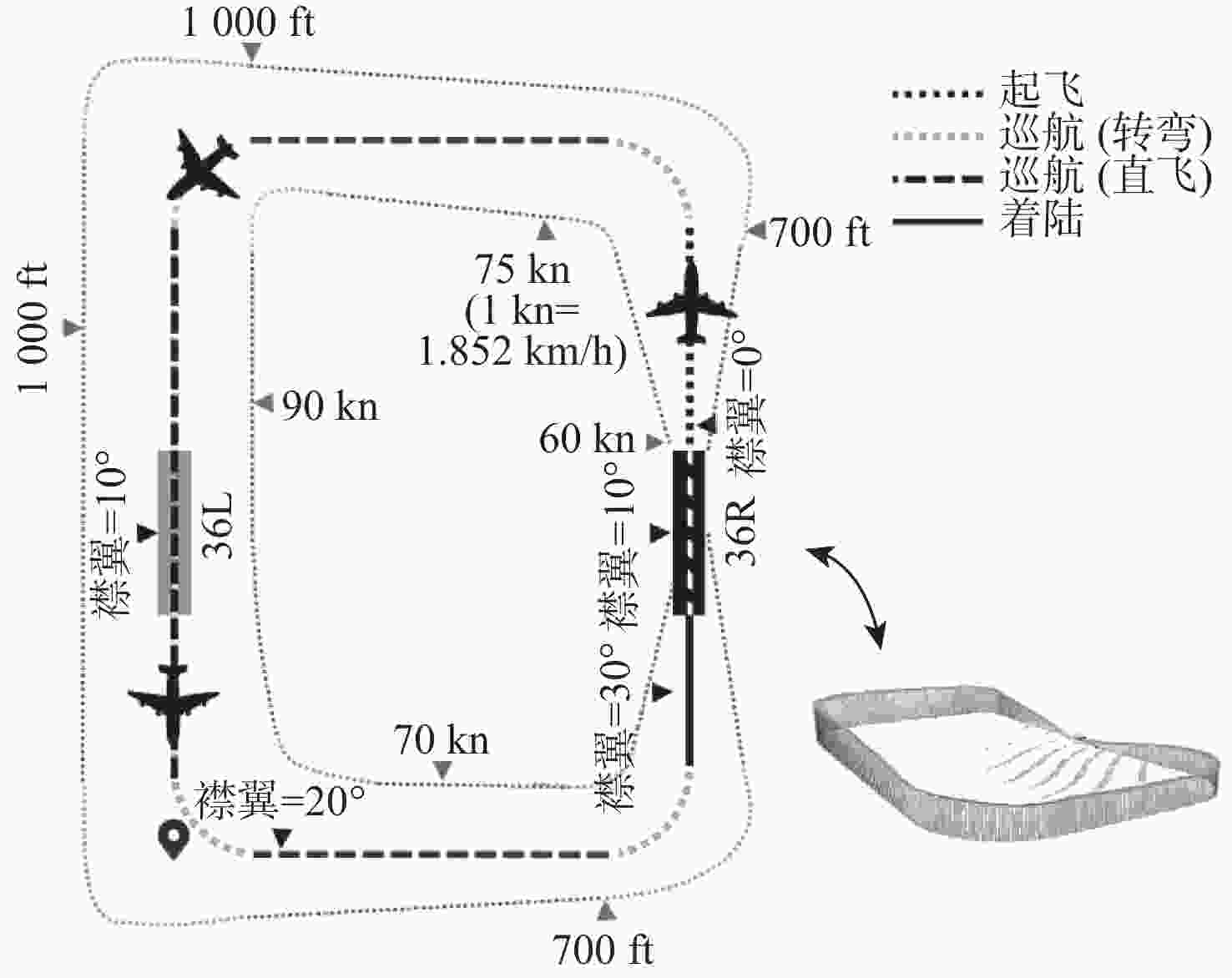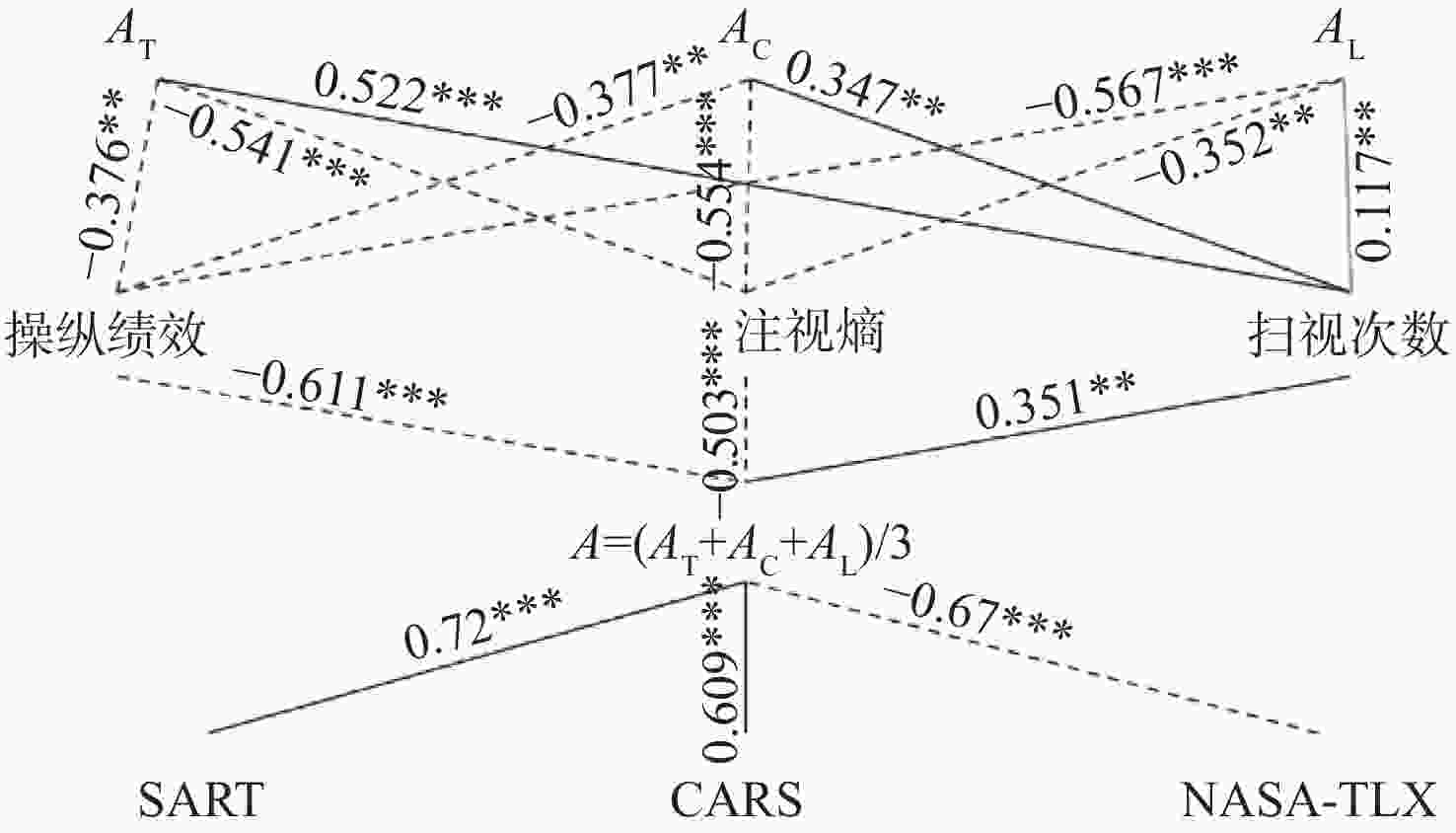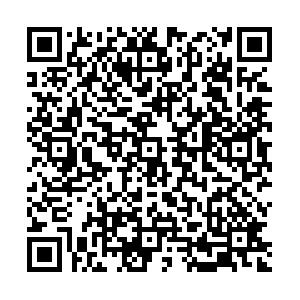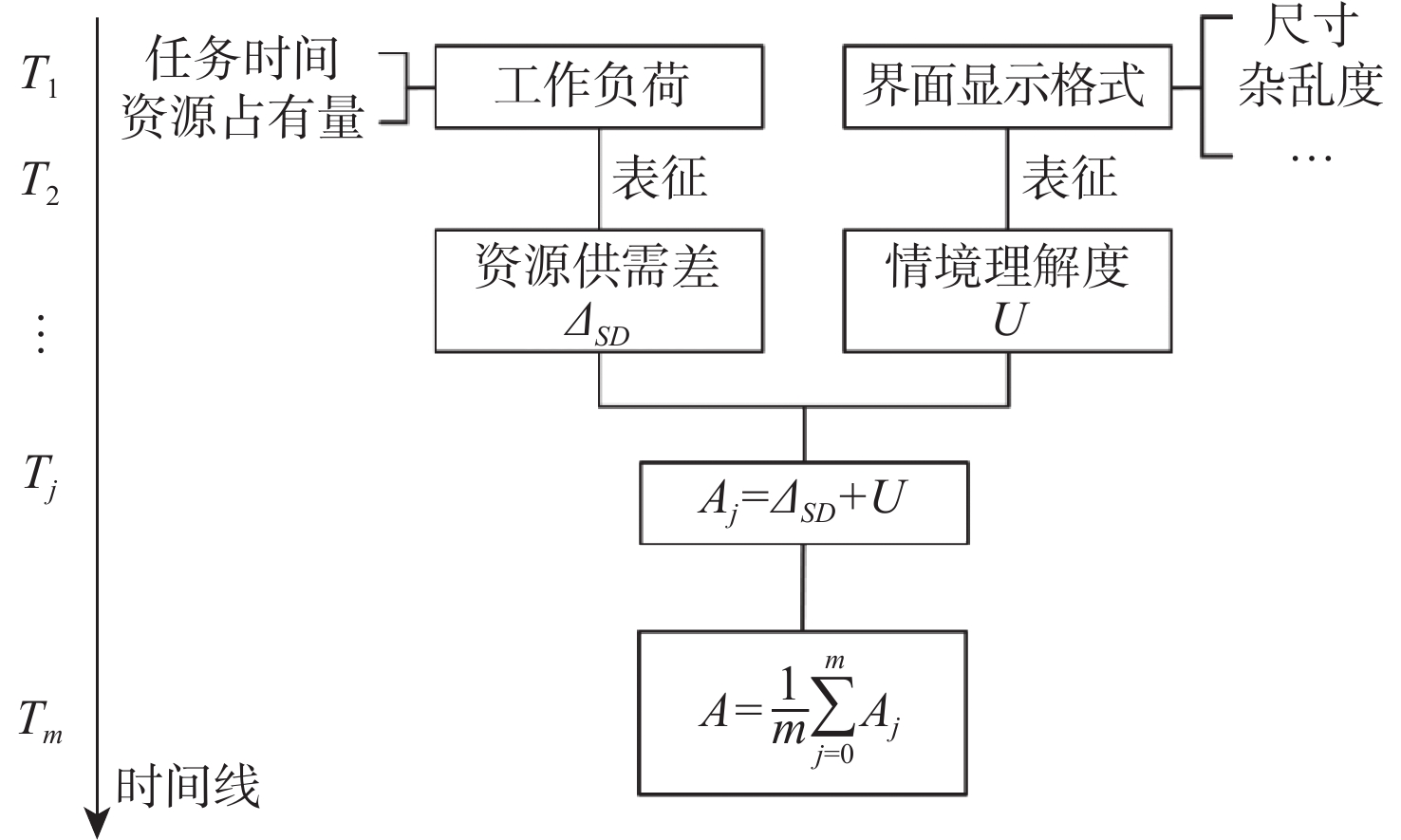Situation awareness model based on resource supply-demand difference and understanding
-
摘要:
为进一步满足航空器人机界面的研制需求,开展航空器任务和显控界面设计紧密结合特点下作业人员情境意识(SA)水平的理论预测,提出一种基于资源供需差与情境理解度的情境意识量化分析模型。该模型以经典且广泛适用的情境意识评估技术(SART)量表对情境意识的定义方式为基础,将人员情境意识表征为资源供需差与情境理解度的加和,并引入多维度人机界面显示格式对情境理解度进行量化,结合任务网络分析与多资源理论对各任务单元的资源供需差进行衡量。为对模型的有效性进行验证,采用30名被试开展不同情境评估难度下的5边飞行模拟实验,通过调整改变仿真气象条件、仪表显示模式、飞行导航地图显示模式以实现对情境评估难度的调控,并结合主观量表、飞行绩效及眼动指标对作业人员在不同情境评估难度下的情境意识水平进行测评。数据分析结果表明,所提情境意识理论模型的计算结果与实验主观(SART量表、机组意识评定量表(CARS)、美国国家航空航天局-任务负荷指数量表(NASA-TLX))、客观(操纵绩效、注视熵、扫视次数)测量结果均呈现出良好的相关性,对模型的效度进行了初步验证。所提情境意识理论模型可结合航空器任务操控流程设计和显控界面设计特征对人员情境意识分析预测提供一定的理论依据和技术方法。
Abstract:To further meet the development needs for human-machine interface of aviation equipment and to theoretically predict pilots’ situation awareness (SA) under the close combination of task with display and control interface design, this paper proposed a model for quantitative analysis of SA based on resource supply-demand difference and understanding. The model was based on the way the classical situation awareness rating technique (SART) scale defined SA, characterizing SA as the combination of resource supply-demand difference and understanding. The understanding was measured by multidimensional human-machine interface display format, while the resource supply-demand difference of task units was measured by combining task network analysis with multiple resource theory. To verify model validity, 30 subjects were selected to complete the simulated flight task in the airfield traffic pattern under different situation difficulties. The situation difficulty was adjusted by changing the simulated weather conditions, instrument display modes, and navigation map display modes. The SA was assessed under different situation difficulties by using subjective scales, flight performance, and eye movement indicators. The data analysis results show that the SA model results have good correlations with subjective (SART, crew awareness rating scale (CARS), and national aeronautics and space administration task load index (NASA-TLX) scales) and objective (manipulation performance, gaze entropy, and number of saccades) measurements. This preliminarily verifies the validity of the model. The proposed model can provide a theoretical basis and technical methods for the analysis and prediction of SA in combination with task flow design and display and control interface design features.
-
表 1 不同情境评估难度条件下的任务情境设计
Table 1. Task situation design under different situation difficulties
情境评
估难度气象条件 仪表
显示模式地图显示模式 界面
示意图低 VFR 正常显示 正常模式 
中 MVFR 混合显示 信息杂乱 
高 IFR CAT1 备份显示 信息杂乱
突显性低
表 2 不同任务阶段的操纵特点
Table 2. Manipulation characteristics of different task stages
任务阶段 操纵特点 起飞 保持10°~20°俯仰角稳定爬升高度,航向保持不变 巡航(直飞) 保持 1000 ft高度平稳飞行,航向保持不变,俯仰角和滚转角保持0°巡航(转弯) 保持10°~20°滚转角进行转弯,高度保持不变,俯仰角保持0° 着陆 保持0°~10°俯仰角稳定降低高度,稳定调整航向和滚转角以对准跑道 表 3 不同任务阶段的操纵绩效评价指标
Table 3. Manipulation performance evaluation indicators for different task stages
任务阶段 操纵绩效评价指标 起飞 $ {\sigma }_{\mathrm{p}} $、$ {\overline{x}}_{\mathrm{t}} $、$ {c}_{\mathrm{v}\mathrm{R}} $ 巡航(直飞) $ {\sigma }_{\mathrm{p}} $、$ {\sigma }_{\mathrm{y}} $、$ {\overline{x}}_{\mathrm{R}} $、$ {\overline{x}}_{\mathrm{t}} $ 巡航(转弯) $ {\sigma }_{\mathrm{p}} $、$ {c}_{\mathrm{v}\mathrm{r}} $、$ {c}_{\mathrm{v}\mathrm{t}} $ 着陆 $ {\sigma }_{\mathrm{p}} $、$ {\sigma }_{\mathrm{r}} $、$ {\sigma }_{\mathrm{y}} $、$ {\overline{x}}_{\mathrm{R}} $、$ {\overline{x}}_{\mathrm{t}} $ 表 4 界面显示格式评估维度对情境意识的支撑程度
Table 4. Support for situation awareness by interface display format evaluation dimension
人机界面设计特征 程度 情境理解度 界面显示的杂乱度 低 0 中 −1 高 −2 界面显示的信息布局优劣程度 优 −0.75 良 −1.5 差 −2 界面显示的突显性 低 0 中 1.2 高 1.5 表 5 情境意识模型的理论计算结果
Table 5. Theoretical calculation results of situation awareness model
情境评估难度 情景意识水平 起飞 巡航 着陆 完整任务 低 1.1429 1.3846 1.2500 1.2857 中 0.8836 1.1254 0.9907 1.0265 高 0.6254 0.8803 0.6685 0.7561 表 6 完整任务阶段实验测量结果
Table 6. Measurement result of the complete task phase
测量方法与指标 平均值(标准差) F p 低情境评估难度 中情境评估难度 高情境评估难度 CARS 13.23(1.38) 12.53(1.53) 10.20(1.79) 30.53 <0.001 SART 7.27(2.03) 5.43(2.08) 2.23(2.37) 41.45 <0.001 NASA-TLX 40.81(10.27) 47.80(11.42) 66.50(11.89) 42.11 <0.001 注视熵 1.33(0.23) 1.53(0.21) 1.62(0.18) 15.52 <0.001 扫视次数 297.86(92.24) 260.97(82.55) 224.58(76.49) 5.71 0.005 操纵绩效 3.08(0.76) 3.34(0.53) 4.14(0.65) 21.75 <0.001 -
[1] ENDSLEY M R. Situation awareness global assessment technique[C]//Proceedings of the IEEE 1988 National Aerospace and Electronics Conference. Piscataway: IEEE Press, 2002: 789-795. [2] 靳慧斌, 刘亚威, 朱国蕾. 基于眼动和绩效分析的管制员情境意识测量[J]. 中国安全科学学报, 2017, 27(7): 65-70.JIN H B, LIU Y W, ZHU G L. Measuring situation awareness of tower controllers based on eye movement and performance analysis[J]. China Safety Science Journal, 2017, 27(7): 65-70(in Chinese). [3] NGUYEN T, LIM C P, NGUYEN N D, et al. A review of situation awareness assessment approaches in aviation environments[J]. IEEE Systems Journal, 2019, 13(3): 3590-3603. doi: 10.1109/JSYST.2019.2918283 [4] 冯传宴, 完颜笑如, 陈浩, 等. 基于多资源负荷理论的情境意识模型与应用[J]. 北京麻豆精品秘 国产传媒学报, 2018, 44(7): 1438-1446.FENG C Y, WANYAN X R, CHEN H, et al. Situation awareness model based on multi-resource load theory and its application[J]. Journal of Beijing University of Aeronautics and Astronautics, 2018, 44(7): 1438-1446(in Chinese). [5] ZHOU F, YANG X J, DE WINTER J C F. Using eye-tracking data to predict situation awareness in real time during takeover transitions in conditionally automated driving[J]. IEEE Transactions on Intelligent Transportation Systems, 2022, 23(3): 2284-2295. doi: 10.1109/TITS.2021.3069776 [6] YEO L G, SUN H Q, LIU Y S, et al. Mobile EEG-based situation awareness recognition for air traffic controllers[C]//Proceedings of the IEEE International Conference on Systems, Man, and Cybernetics. Piscataway: IEEE Press, 2017: 3030-3035. [7] KIM J, MYUNG R. A predictive model of situation awareness with ACT-R[J]. Journal of the Ergonomics Society of Korea, 2016, 35(4): 225-235. doi: 10.5143/JESK.2016.35.4.225 [8] GORE B F, HOOEY B L , HAAN N, et al. A validated set of MIDAS V5 task network model scenarios to evaluate nextgen closely spaced parallel operations concepts: HCSL-13-03[R]. Moffett Field: NASA Ames Research Center, 2013: 1-35. [9] WICKENS C D, GOH J, HELLEBERG J, et al. Attentional models of multitask pilot performance using advanced display technology[J]. Human Factors, 2003, 45(3): 360-380. doi: 10.1518/hfes.45.3.360.27250 [10] MEYER D R. Effects of automation on aircrew workload and situation awareness in tactical airlift missions[D]. Fort Belvoir: Air Force Institute of Technology, 2015. [11] TAYLOR R M. Situational awareness rating technique (SART): the development of a tool for aircrew systems design[M]//TAYLOR R M. Situational awareness. London: Routledge, 2017: 111-128. [12] LEE Y J, JUNG K T, LEE H C. Use of gaze entropy to evaluate situation awareness in emergency accident situations of nuclear power plant[J]. Nuclear Engineering and Technology, 2022, 54(4): 1261-1270. doi: 10.1016/j.net.2021.10.022 [13] SHEPHERD A. HTA as a framework for task analysis[J]. Ergonomics, 1998, 41(11): 1537-1552. doi: 10.1080/001401398186063 [14] FRIEDRICH M, BIERMANN M, GONTAR P, et al. The influence of task load on situation awareness and control strategy in the ATC tower environment[J]. Cognition, Technology & Work, 2018, 20(2): 205-217. [15] PARASURAMAN R, SHERIDAN T B, WICKENS C D. Situation awareness, mental workload, and trust in automation: viable, empirically supported cognitive engineering constructs[J]. Journal of Cognitive Engineering and Decision Making, 2008, 2(2): 140-160. doi: 10.1518/155534308X284417 [16] 田书婕, 王波, 王丽, 等. 基于时间-多资源占用的工作负荷评估模型[J]. 北京麻豆精品秘 国产传媒学报, 2017, 43(12): 2497-2504.TIAN S J, WANG B, WANG L, et al. Workload evaluation model based on occupation of time and multi-resource[J]. Journal of Beijing University of Aeronautics and Astronautics, 2017, 43(12): 2497-2504(in Chinese). [17] MCCRACKEN J H, ALDRICH T B. Analyses of selected LHX mission functions: implications for operator workload and system automation goals: ASI 479-024[R]. Fort Rucker: ASI, 1984. [18] GRIER R, WICKENS C, KABER D, et al. The red-line of workload: theory, research, and design[J]. Proceedings of the Human Factors and Ergonomics Society Annual Meeting, 2008, 52(18): 1204-1208. doi: 10.1177/154193120805201811 [19] KIM S K, SUH S M, JANG G S, et al. Empirical research on an ecological interface design for improving situation awareness of operators in an advanced control room[J]. Nuclear Engineering and Design, 2012, 253: 226-237. doi: 10.1016/j.nucengdes.2012.08.026 [20] 肖旭, 完颜笑如, 庄达民. 显示界面多维视觉编码综合评价模型[J]. 北京麻豆精品秘 国产传媒学报, 2015, 41(6): 1012-1018.XIAO X, WANYAN X R, ZHUANG D M. Comprehensive evaluation model of multidimensional visual coding on display interface[J]. Journal of Beijing University of Aeronautics and Astronautics, 2015, 41(6): 1012-1018(in Chinese). [21] BLUNDELL J, SCOTT S, HARRIS D, et al. With flying colours: pilot performance with colour-coded head-up flight symbology[J]. Displays, 2020, 61: 101932. doi: 10.1016/j.displa.2019.101932 [22] LIN C J, LIN P H, CHEN H J, et al. Effects of controller-pilot communication medium, flight phase and the role in the cockpit on pilots’ workload and situation awareness[J]. Safety Science, 2012, 50(9): 1722-1731. doi: 10.1016/j.ssci.2012.04.007 [23] 许卫宝. 飞行员着舰的多层次模糊综合评价方法[J]. 中国舰船研究, 2013, 8(2): 17-21. doi: 10.3969/j.issn.1673-3185.2013.02.004XU W B. A comprehensive evaluation method for carrier landing based on fuzzy analytical hierarchy process[J]. Chinese Journal of Ship Research, 2013, 8(2): 17-21(in Chinese). doi: 10.3969/j.issn.1673-3185.2013.02.004 [24] 靳慧斌, 吕川, 朱国蕾. 塔台管制中情境意识与视觉搜索策略关系研究[J]. 重庆交通大学学报(自然科学版), 2019, 38(1): 108-112.JIN H B, LV C, ZHU G L. Relation between visual search strategy and situation awareness in tower control[J]. Journal of Chongqing Jiaotong University (Natural Science), 2019, 38(1): 108-112(in Chinese). [25] STANTON N A, LI W C, HARRIS D. Editorial: ergonomics and human factors in aviation[J]. Ergonomics, 2019, 62(2): 131-137. doi: 10.1080/00140139.2019.1564589 [26] KOEN V D M, HENK V D, ROLF Z. Eye movements as an indicator of situation awareness in a flight simulator experiment[J]. The International Journal of Aviation Psychology, 2012, 22(1): 78-95. doi: 10.1080/10508414.2012.635129 [27] FENG C Y, WANYAN X R, LIU S, et al. An approach to situation awareness (SA) assessment in flight simulation: SA dynamic circulation (SADC) model[J]. Human Factors and Ergonomics in Manufacturing & Service Industries, 2021, 31(5): 559-569. [28] 冯传宴, 完颜笑如, 刘双, 等. 负荷条件下注意力分配策略对情境意识的影响[J]. 航空学报, 2020, 41(3): 123307.FENG C Y, WANYAN X R, LIU S, et al. Influence of different attention allocation strategies under workloads on situation awareness[J]. Acta Aeronautica et Astronautica Sinica, 2020, 41(3): 123307(in Chinese). [29] WICKENS C D, MCCARLEY J S, ALEXANDER A L, et al. Attention-situation awareness (A-SA) model of pilot error: AHFD-04-15/NASA-04-5[R]. Mountain View: NASA Ames Research Center, 2005. [30] LIU S, WANYAN X R, ZHUANG D M. Modeling the situation awareness by the analysis of cognitive process[J]. Bio-Medical Materials and Engineering, 2014, 24(6): 2311-2318. doi: 10.3233/BME-141044 [31] JIANG S Q, CHEN W J, KANG Y T. Correlation evaluation of pilots’ situation awareness in bridge simulations via eye-tracking technology[J]. Computational Intelligence and Neuroscience, 2021, 2021: 7122437. doi: 10.1155/2021/7122437 [32] DE WINTER J C F, EISMA Y B, CABRALL C D D, et al. Situation awareness based on eye movements in relation to the task environment[J]. Cognition, Technology & Work, 2019, 21(1): 99-111. [33] IVETA Š, PECHO P, AŽALTOVIČ V, et al. Number of saccades and fixation duration as indicators of pilot workload[J]. Transportation Research Procedia, 2020, 51: 67-74. doi: 10.1016/j.trpro.2020.11.009 -






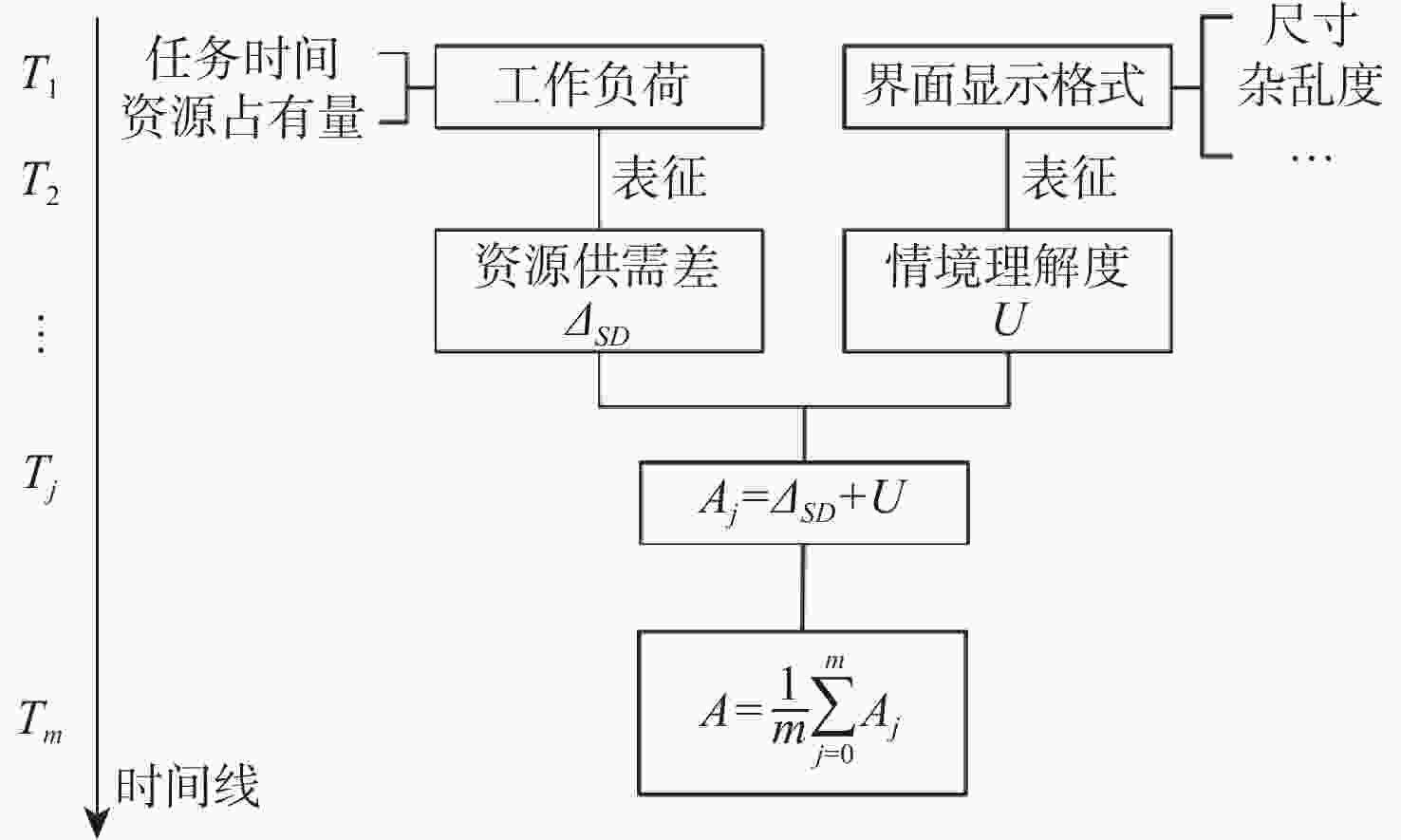
 下载:
下载:

